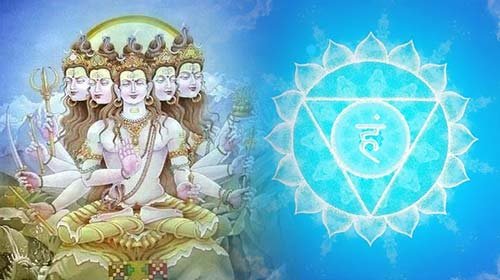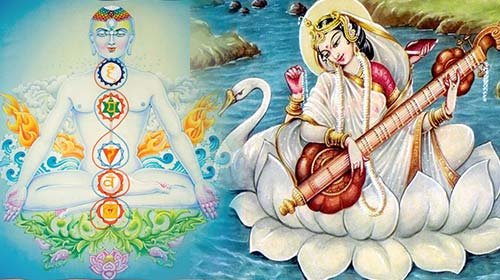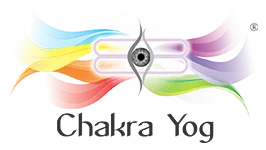Deities connected to Vishuddha Chakra

The Chakra system symbolizes the vital energy of the physical body, emotions, intellect, and spirit. Positive attributes associated with the Chakras, such as love, intuition, and bravery, are also associated with Hindu deities. By studying about the many deities connected with the Chakras (swirling energy vortexes) you may learn how to foster and sharp their beneficial qualities in your life, bringing you one step closer to the divine.
These spinning energy centers have been compared to the pole that must be climbed. It’s a slippery pole. As a result, the gods’ assisting hand and their resonating energies with these chakras aid in the ascension of the devotee. Since ancient periods in human history, total submission to the Gods has been raising their connected chakras.
Lotus flowers represent these chakras with different pretty patterns. This flower thrives in lakes and pools, taking root under the surface in the slimy muck where no light can enter. Its stem shoots upward toward the light, breaking the surface into fresh air and sunlight. The sun’s energy then nourishes the bud and leaves until the beautiful lotus flower blooms. Vishuddha is the name given to the fourth chakra. Awareness grows from the lower chakras as ascending kundalini energy and travels through the waters of the intellect, becoming more refined as it evolves, until it finally bursts into the light of the superconscious mind, where it spiritually blossoms into the 1,008-petaled lotus chakra at the top of the head.
The lotus flower begins in the dirt, flows through the water, and ultimately blooms on the surface. There are many unique phases that it goes through while in the mud: The dirt symbolizes the instinctual mind, the water represents the intellectual mind, and the surface represents the superconscious mind, which blossoms to become one with God.
Therefore, connecting with the deity associated with each chakra makes to open and balance this chakra as per bhakti or resonance between both energies. The more the connection is established the deeper the healing of the corresponding energy center. This happens because these energies entwined in each chakra are the same energies brought by each deity connected to them. The resonating gods of Vishuddha chakra are Lord Panchavaktra Shiva and goddess Saraswati. By sharping our connection with them our whirling energy vortexes known as our chakras leads us to a spiraling union not only with these deities but ultimately also with the supreme and only one Brahman which represents all forms of god.
To contact your Chakra god, focus on the deity’s picture and attempt to see it in your thoughts. This is best accomplished by gradually building up the picture, and adding details as you focus on it. Here is a simple meditation to assist you
in developing a connection with your god or goddess:
- To begin, imagine the deity or goddess as a dignified sitting figure.
- Examine the number of arms and faces that they have attributed.
- Begin to visualize the skin color and jewelry and other details appearing on the god’s portrayal gradually.
- Consider the garments that the god is wearing.
- See whether they have any type of things in their hands since they generally imply god attributes to meditate upon too.
- Allow your thoughts to concentrate on it and observe what comes to you.
Each Chakra is filled with the male god’s vitality as well as the energy of their female pair or consort, a power known as Shakti.

Lord Shiva Panchavaktra (Panchamukhi) may be perceived in five different forms: Aghora, Ishana, Tat Purusha, Vamadeva (Varna Deva), and Rudra (or Saddyojat). Panchavaktra, also known as Panchamukhi, is a five-headed deity that combines all five forms. Shiva’s destructive side is Aghora. He is often represented as the Keeper of Burial and Cremation Grounds and is linked to death. He is claimed to consume life in order to create place for new life or regeneration. On a Panchamukha Sivalingam, he faces south. Ishana is both omniscient and omnipotent. He is portrayed as an all-encompassing and immortal Shiva. He is the originator of all things. On a Panchamukha Sivalingam, he faces north-east. Shiva’s character is represented by the purusha. This shape is generally linked with sages, ascetics, and celibacy since it is related with meditation and enlightenment. On a Panchamukha Sivalingam, he faces east. Vamadeva (Varna Deva) is Shiva’s feminine aspect. He has a gentle demeanor and is related with water. On a Panchamukha Sivalingam, he faces north. He is a healer and bestower of both mental and physical health. Shiva’s creative and regenerative force is represented by Rudra (Sadyojata). He is connected with rage and fury. On a Panchamukha Sivalingam, he faces west. Panchavaktra, also known as Panchamukhi, is a synthesis of all five forms. By meditating on Panchamukhi (Panchavaktra) Shiva, the aspirant will get excellent mental health, the capacity to understand clearly, protection from all ailments and negativities, purification of the mind and body, destruction of ignorance, and control over bad behaviors.
The mantra for Panchamukhi Shiva is Shiva Gayatri.
Om Pancahvaktraye Vidmahe
Mahadevaye Dhimahi
Tanno Rudra Prachodayat ||

Goddess Saraswati is the goddess of study, music, art, speech, wisdom, and knowledge. She is a member of the Tridevi, which also includes the deities Lakshmi and Parvati. Saraswati is mentioned as a deity for the first time in the Rigveda. From the Vedic era to the present time of Hindu religions, she has remained prominent as a deity. In learning, she has four hands that symbolize the four components of human personality: mind, intellect, awareness, and ego. In depictions, she holds religious scriptures in one hand and a lotus, the emblem of pure knowledge, in the other. Saraswati uses her other two hands to play the veena, a string instrument, to create songs about love and life. She is clad in white, the color of purity, and rides a white swan, which represents Sattwa Guna (purity and discrimination). Saraswati depicts the unrestricted flow of knowledge and awareness. She is the mother of the Vedas, and hymns to her, known as the ‘Saraswati Vandana,’ often open and close Vedic lectures.
Story of Saraswati
Once upon a time Lord Brahma realized that the entire universe lacked shapes, conceptions, and orders after creating it. He was disoriented and in need of aid in organizing the cosmos. He resolved to construct the exact embodiment of knowledge to assist him with this staggering undertaking, and the Goddess Saraswati erupted from his lips. She gave him instructions on how to bring order to the universe as we know it. The Sun, Moon, and Stars were created. The oceans appeared, and the seasons were established. As a result, Lord Brahma became the Creator of the World, with Saraswati as his Wisdom Source.
As we have seen there are several deities connected with our Vishuddha chakra in very deep association and resonance with the qualities of our Throat chakra. Total surrender to these deities is one of the ways to assist us in enhancing the function of our Vishuddha (Throat) Chakra, which awakens our inner guru so that we can follow our right path with knowledge. The qualities and attributes of the above deities are the same as the ones of our Vishuddha chakra, always resonating at the same vibrational frequency.
Healing our Throat chakra with the helping hands of the gods may actually be done in plentiful ways. Starting from meditation to contemplation of the deity’s pictures, through their mantras, yantras and wearing Rudraksha beads ruled by them are all proven effective ways to balance Vishuddha so that it works productively for you.






